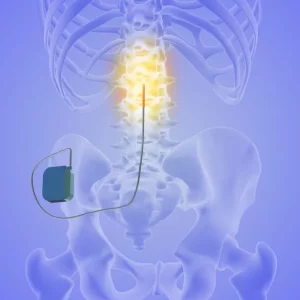What does an orthosis for spinal cord injury patients do, and is it absolutely necessary? After a spinal cord injury, your doctor may fit you with a brace to promote proper posture and prevent further injury. This article will explain the benefits of wearing an orthosis for spinal cord injury recovery and guide you through the various types of orthoses available for SCI survivors.
What Is the Purpose of an Orthosis for Spinal Cord Injury?
An orthosis for spinal cord injury patients has two primary functions. The first function is to stabilize the spinal column to promote healing at the injury site and the second function is to support the affected body parts for functional rehabilitation.
As a result, wearing an orthosis can help spinal cord injury patients:
- restrict spinal column movements to prevent further damage and promote healing
- correct misalignments and stabilize the spinal column
- combat spasticity and gently stretch tight muscles
- promote proper posture
- reduce weight-bearing and pain at the joints
Types of Orthoses for Spinal Cord Injury
The type of orthosis you wear may depend on the severity and level of your spinal cord injury. Not everyone with a spinal cord injury will need orthoses, but those that do can greatly benefit from the additional support.
Here are the different types of orthoses that spinal cord injury patients may be advised to wear:
Head and Neck Braces

Those with severe higher level cervical spinal cord injuries (C4 and up) may need to wear a halo brace to help stabilize their head and neck. The average head weighs about 10 pounds. A paralyzed neck will not be able to support weight, so a halo brace will help provide maximum support and stability while the spinal column heals. A halo brace consists of a halo that is pinned to the head, a vest, and bars that connect the halo and vest.
Those with less severe cervical spinal cord injuries may wear a cervical collar. Unlike a halo brace, it is non-invasive and is a soft cushion that surrounds the neck to support the weight of the head.
Spinal Brace
A spinal brace provides the additional support to maintain an upright sitting position, prevent further damage, and promote healing. There are several types of spinal braces available for spinal cord injury, including:
- Cervical-thoracic orthosis: stabilizes the neck and upper back for cervial-level SCI survivors or thoracic-level SCI survivors
- Thoracic-lumbar-sacral orthosis: surrounds your entire trunk and is more often helpful for low thoracic-level SCI survivors and lumbar-level SCI survivors
- Lumbar-sacral orthosis: stabilizes the lower half of the trunk most often for low lumbar-level SCI survivors and sacral SCI survivors
Generally speaking, the higher the level of injury to the spinal cord, the more support the survivor will benefit from. Ask your therapist for recommendations on which orthosis is right for you.
Lower Limb Braces

All spinal cord injury patients experience some weakness in their lower extremities. Regardless of whether you have a cervical, thoracic, lumbar, or sacral spinal cord injury, a lower-limb orthosis may be useful.
An ankle-foot orthosis (AFO) is beneficial for spinal cord injury patients who have ankle weakness. It provides stability and support to prevent foot drop when you are walking.
Those experiencing paralysis from the knee down may benefit from a knee-ankle-foot orthosis (KAFO) and those with paralysis of the entire lower body may require a hip-knee-ankle-foot orthosis (HKAFO).
Upper Limb Braces
The cervical region of the spinal cord innervates the head, neck, and arms. Cervical spinal cord injuries (injury to the uppermost spinal cord segments in the neck area) may require an arm or wrist brace to manage upper limb spasticity. Those with thoracic, lumbar, or sacral spinal cord injuries generally have full upper limb function and therefore will not need an upper limb orthosis.
Serial Casting

Serial casting may help relieve severe spasticity. When applying gentle tension to the spastic muscle over a period of time, the muscles lengthen, which can help increase range of motion. Affected limbs are recasted weekly for up to 12 weeks so that each time a new cast is applied, the muscle is stretched more than the previous time. Serial casting gently stretches spastic muscles, and also prevents those muscles from additional tightening.
How Long Do Spinal Cord Injury Patients Need to Wear Orthotics?
How long a person wears an orthosis depends on the severity of their injury. Typically, a spinal cord injury patient may wear a spine stabilizing brace for up to 6 months until the spine heals. Your doctor will determine when it is appropriate and safe to gradually decrease the time spent wearing the orthosis.
Ever heard the phrase “use it or lose it”? That’s exactly what happens if you stop using your muscles and rely too heavily on your orthosis. Learned nonuse is when your body gets so accustomed to using the brace that it forgets how to engage your muscles.
The central nervous system is incredibly adaptable and is capable of neuroplasticity (the ability to rewire itself). The damage caused by a spinal cord injury cannot be reversed, but the spinal cord can relearn affected functions (if the injury was incomplete, not complete).
The best way to promote neuroplasticity is through massed repetition. The more you repeat a weak movement, the stronger the neural pathways will get. The movement will gradually become more natural until one day, you won’t need the orthosis at all.
Orthosis for Spinal Cord Injury Recovery: Key Points
Orthoses for spinal cord injury patients help protect the spine, promote healing, aid mobility, and ensure proper form. An orthosis is generally required for short-term support. Prolonged use can result in learned nonuse, so it’s important to stick with a consistent home therapy program to keep recovery going. This is why therapists love to remind us to “use it or lose it!”
We hope this article helped you better understand how orthoses aid in spinal cord injury recovery.










